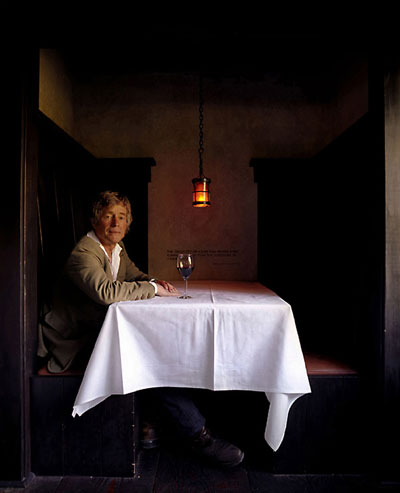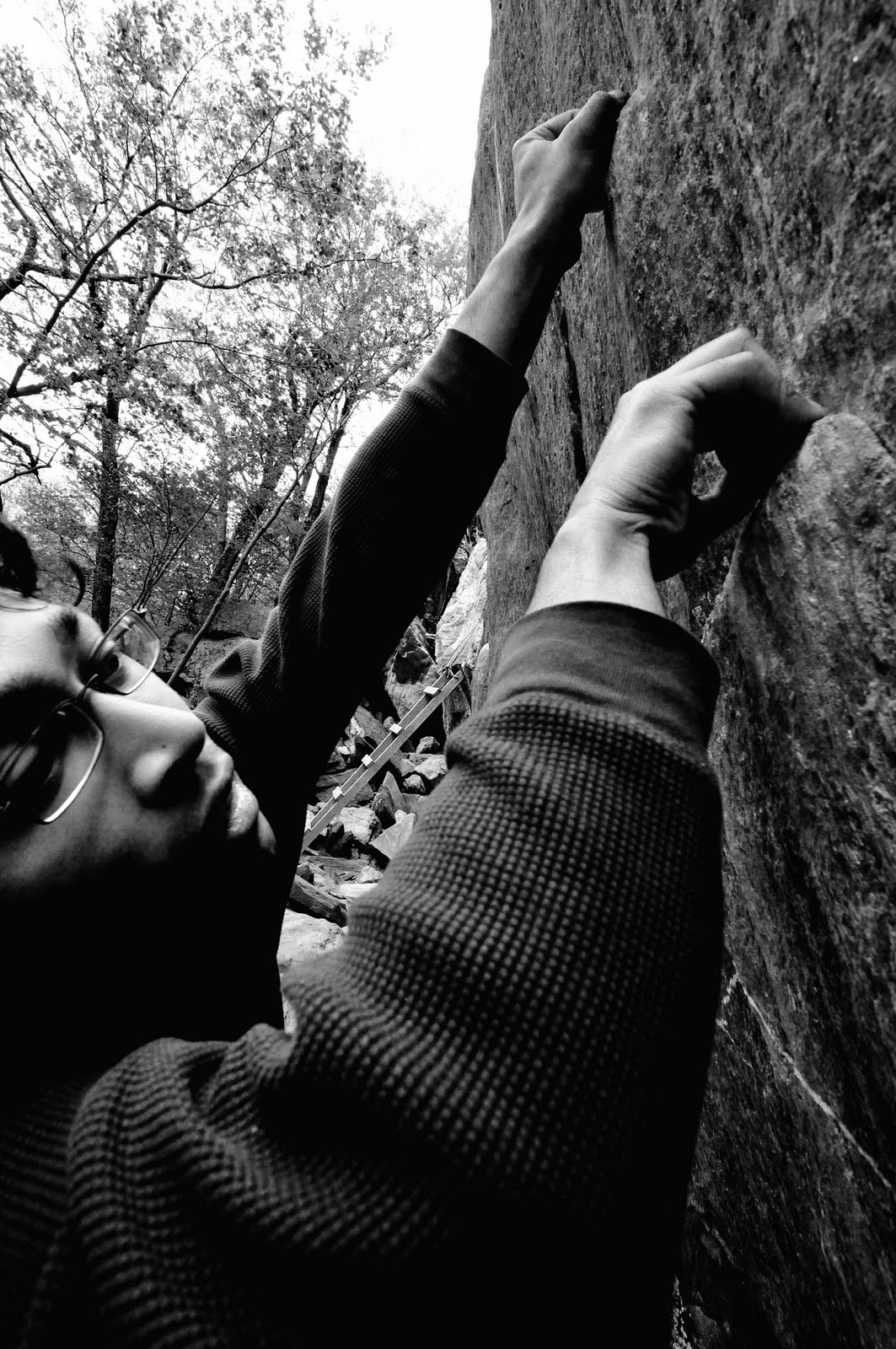
"These are extraordinarily pure, natural expressions of winemaking... primitive in the best sense of the word."
-Robert M. Parker, Jr.*
"Why would you want to drink a wine that, if it were a person, you would be bored of talking to?"
-Sean Thackrey
In the wine world, tasting is believing. It seems like every winemaker has a captivating fairy tale to tell, something that sets them apart, makes them special. While a good story can differentiate your product and boost sales, it unfortunately can't make good wine. That test lies in the bottle. Yet despite the many vintners who talk big but don't deliver, there are still names whose wines captivate and enthrall those in the know. Boncompagni Ludovisi, Abe Schoener, and of course, Sean Thackrey. If Petrus, Screaming Eagle, and DRC represent the pinnacle of their respective styles, Ludovisi, Schoener, and Thackrey represent styles unto themselves, art rather than craft, fascination over typicity, creativity over elegance.
If I gush excessively, I am not alone.
In Robert Parker, Eric Asimov, and Alder Yarrow, these wines have an audience of the highest caliber. To judge by the prices they don't appear the most sought after wines in the world, but money is not the only barrier that counts. Ludovisi's wines are available at just one store in the US; you must buy them as a mixed case, and you must be "judged worthy" by the distributor. Schoener's wines are made in minuscule quantities, and most are snapped up by the mailing list. Thackrey's high-end wines (between $100 and $200) are also small-production (in the hundreds of cases) and are so difficult to find that he created a database on his site devoted to tracking down bottles. However Thackrey does produce a relatively inexpensive wine called Pleiades, an "everything-but-the-kitchen-sink" melange of different vintages, numbered by release rather than year. I came across a lone bottle of the XV at the Corkscrew, and promptly snapped it up - I have never seen another Thackrey bottle, in any store, since.
Who is Sean Thackrey? Art-dealer-turned master vigneron. Medieval tinkerer. Craftsman from Shakespeare's time. Curator and transcriber of ancient viticultural texts. In writing this I tried to sum up the man, and realized that as much as we wine drinkers like to categorize and package, it's really all a crutch for dealing with complexity.
Sean Thackrey is a man worth knowing, whose wine is worth drinking.
His online library of wine-related texts (from which he gleans unconventional inspiration), spans 7 languages and reaches back to the 14th century. He includes the following introduction:There are many purposes in reading. One is, to get to the point. Such readers should flee this site as fast as their mice will carry them.
Such words might be equally well applied to his wine. He aims for interest, pleasure, personality. "I don't drink Napa Cabs anymore-" explained Thackrey in an interview, " They're too damn polite for me." The wine I drank was certainly not polite. Nor was it dull or elegant. It held my interest and brought pleasure and evolving complexity until its last drop, which is as much as I've ever had from a bottle of wine.
Tasting note:
Sean Thackrey Pleiades XV
Medium garnet in the glass, the wine immediately blooms into a trio of eucalyptol, Brettanomyces, and dark fruits. Underneath these primary tones lie an ever-shifting accompaniment that suggests tiramisu, charcoal, tar, manure, damp wood, blackcurrant, orange spice, herbs, roasted lamb, and grilled carrots. The bouquet seems to change constantly - hence my verbose attempt to describe my many impressions. In the mouth it is weighty, medium-bodied, with fresh acidity and the slightest touch of silky tannins. There is a touch of sugar on the mid-palate which is my only structural complaint. The gorgeous finish lasts 80 seconds.
Certain aromatic elements remind me of the 2000 Guigal Cote-Rotie La Mouline though this doesn't have the La Mou's elegance or balance. The syrupy flavors and oak influence remind me a little of Gerard Perse's 2005 Clos L'Eglise (Cotes de Castillon). This wine keeps evolving in the glass - as the Brett blows off, other flavors rise to prominence in turn. 95 points. $35.
______________
Addendum: Chow.com recently uploaded an interview with Sean Thackrey.
*Parker's Wine Buyer's Guide No. 7
... Read more.
Monday, January 26, 2009
Sean Thackrey 'Pleiades' XV
Wednesday, January 21, 2009
A Year in Wine Numbers
I owe my parents a lot. And I don't just mean four years of college and 18 years of room and board (plus an extra 9 months' rent, according to my mom). From my dad I inherited an engineering bent, entrepreneurial spirit, and a high sensitivity to acetaldehyde and methoxy-pyrazines. From my mom I inherited musical sense and a love of numbers, metrics, data, whatever you want to call it - I'm a statistics junkie.
When it comes to wine statistics, CellarTracker is a gold mine. There's a huge amount of data (69,000 users as of 2008), and behind CT's butt-ugly interface hides an excellent tasting note organization system which I have personally taken advantage of ... 430 times to date. After about 15 months of wine tasting, I decided to satisfy my statistical curiosity.
Before I get into the numbers, I should acknowledge that CT scores suffer from several sources of noise, including but not limited to:
My personal scoring system can be described as follows:
Here's a graph of my score distribution compared to CT's. I'm happy to note that my scores follow an approximate Gaussian distribution that is more centered than the CT distribution. The sparseness of the bars in the low end is probably an artifact of how I score - there's just less resolution between terrible and not-so-terrible wines than there is between excellent, complex wines. Plus who wants to agonize over 63 points vs. 64 points? I tend to just round to the nearest 5 or 10. NOTE: The bars at 49 points represent non-scored wines, including flawed bottles.
Next I looked at the geographical spread of my tasting notes. Because of wine's intimate connection with terroir and culture, I love to imagine that each bottle takes me on a brief trip to its birthplace. Walking through a wine store is like browsing a global travel catalogue. When it comes to countries, France and the US dominate. The only reason Italy follows is because I tasted over 60 Italian wines in just a few hours at a trade tasting last September..png)
Looking closer at the region level, it appears that California dominates. However this is largely a side effect of my job last summer working in various vineyards. Most of my tasting has centered around various French regions, resulting in a rather crowded "Other" category..png) Finally I decided to look at the different varietals I've tried. California was the first region to exalt the varietal, labeling even blended wines by grape (15% other varietals are allowed). When it comes to blends, varietal character is difficult to discern, though not impossible. There are thousands of varietals out there, though only a handful produce great wines. There's even a 100 Varietal Club, for people who have tasted 100 different varietals and want a silly plaque on their wall. As of my last count, I've tasted 93 varietals, just short of the 100. Given some of the terrible non-vinifera strains and obscure French cultivars I've tried, I'm not too keen on tasting more obscure varietals, even for a pretty plaque.
Finally I decided to look at the different varietals I've tried. California was the first region to exalt the varietal, labeling even blended wines by grape (15% other varietals are allowed). When it comes to blends, varietal character is difficult to discern, though not impossible. There are thousands of varietals out there, though only a handful produce great wines. There's even a 100 Varietal Club, for people who have tasted 100 different varietals and want a silly plaque on their wall. As of my last count, I've tasted 93 varietals, just short of the 100. Given some of the terrible non-vinifera strains and obscure French cultivars I've tried, I'm not too keen on tasting more obscure varietals, even for a pretty plaque.
Finally I looked up my top 5 wines so far. They represent three different countries and all come from different appellations. Each one was a surprise and a revelation - a profound learning experience:
1. Sean Thackrey "Pleiades" XV old vines (Bolinas, CA) - A wonderfully complex, delicious blend from a visionary winemaker (95 points)
2. '96 Taluau Vieilles Vignes (St.-Nicholas de Bourgueil) - A stunning wine from left field - aged cabernet france, in all its stewed bell pepper and cassis glory (95 points)
3. '00 Guigal Cote-Rotie "La Mouline" - Aged over 30 months in new oak, yet its delicate body doesn't show it. Tiramisu, blackberry, and bacon (94 points)
4. '05 Melis (Priorat, Spain) - Pure fruit wrapped in astounding layers of oak treatment, producing caramel, roasted nuts, and coffee (93 points)
5. '98 Chateau Kirwan (Margaux) - My first aged Bordeaux - not something I'll likely forget anytime soon (93 points)
... Read more.

